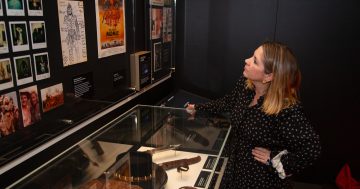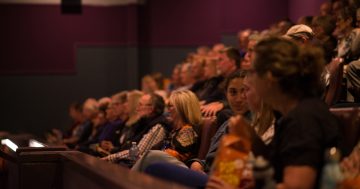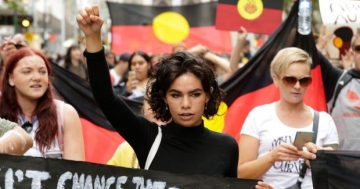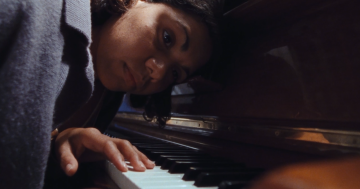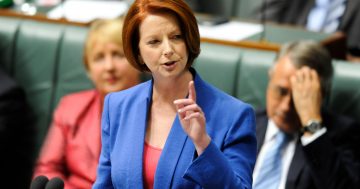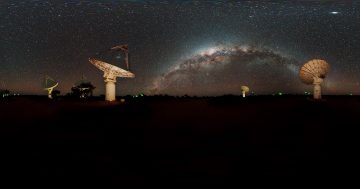
Australian cinema is alive and kicking. Far too often victim to the Australian cringe – an apparent reluctance to support homegrown film by going to see our movies, our stories, our streets and our people reflected on the big screen – Australian film is nevertheless comparable in quality to any other. In its Exclusive Season at Dendy, Australia Day contemplates the cultural state of modern-day Australia through ambitious multi-narrative storytelling.
In the vein of Amores Perros (2000), Traffic (2000), Intermission (2003) and Crash (2004), where clashes of class and culture abound in Mexico, Mexico/USA, Ireland and the USA respectively, Australia Day gauges the cultural climate down under.
As its promotion states, the events take place over a 12-hour period. The setting for this mosaic musing is Brisbane (were it not for the palm trees, we could equally be in the outer suburbs of Melbourne or Sydney). For some, the title may slightly mislead but this is a good thing. This is not a race-riot film. Nor is it an overwhelmingly degenerate spectacle of jingoistic, parochial and overzealous patriotism. While such insalubriousness does rear its head, it is not the crux of the production. The piece is broader in scope and does an admirable job of interweaving honest plot-lines which touch on more than just the easy film fodder of blatant sensationalist and racist fervour, exploring various nuances of Australian society’s multicultural fabric.
The framing on January 26 – an increasingly contentious, provocative and polarising date in contemporary Australia – serves as more of a platform-plot-device by which to cast a gaze upon our multicultural nation, rather than a means by which to explicitly and intellectually unpack the nature of the date or the day itself.
Our three primary protagonists each come from distinct cultural backgrounds: April (Indigenous), Sami (Iranian) and Lan (Chinese). As we get caught up in their individual plights and predicaments, so too do other unsuspecting members of the public, namely police officer Sonya, teenager Jason, and failed farmer Terry played by Australian icon Bryan Brown who commands his role in what is now his third collaboration with director Kriv Stenders.
Akin to Australian classic Lantana (2001), the narratives of the core triptych feed sub-narratives which reverberate across the entire film, in turn affecting each and every character we meet. Despite the increased inter-connectivity of events as proceedings gather momentum, credibility is not adversely affected. This is a testament to the accomplished direction which deftly and delicately dances between the concurrent events, developing motivations and myriad challenges our ensemble must contend with.
From the outset, both character and plot development propel the film forward with compelling intrigue. The absorbing real-time experience hurtles along via wonderful tracking shots and seamless editing which effortlessly floats the viewer between scenes and separate story strands. The kinetic camera-work careens us along highways, streets, down alleys, and in and out of homes, buildings and warehouses, with a real sense of urgency as each story faces a race against the clock. It all contributes to a feeling that this could well be any city in Australia; this could be happening on your street.
Having recently directed the darker TV mini-series The Principal (2015), simmering with race relations, cultural clash and social struggle, director Kriv Stenders is best known for the wholesome fair-dinkum family fare of Red Dog (2011) and follow-up Red Dog: True Blue (2016). His portrait of Australia here is far more rough-and-ready than ‘ruff-and-reddy’.
Writer Stephen M. Irwin, whose Australian mini-series Secrets and Lies (2014) starring New Zealand’s Martin Henderson would go on to be adapted under the same name for American audiences with Ryan Phillippe and Juliette Lewis, also recently served as co-writer of the TV adaptation of Australian cult classic Wake In Fright (1971).
With gripping and believable stories, excellent pacing, silky cinematography and a highly competent and robust cast, Australia Day is an engaging cinema experience. Albeit occasionally challenging, this is typically unsanitised and quintessential Australian film-making. A cameo from TV legend Ernie Dingo is an added bonus. Four out of five.
Go on. Support Aussie cinema. Where the bloody hell are you?
Showing exclusively at Dendy Canberra from September 21 – October 4 and Premium on Demand from Sept 27 – Nov 14.












